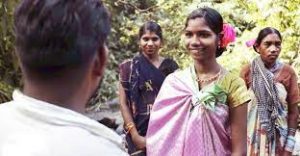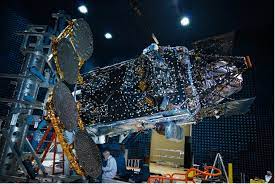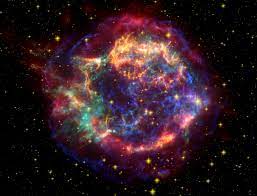Today’s Current Affairs: 10th Apr 2023 for UPSC IAS exams, State PSC exams, SSC CGL, State SSC, RRB, Railways, Banking Exam & IBPS, etc
Table of Contents
Indian Space Policy 2023:

The Union Cabinet has approved the Indian Space Policy, 2023 to enhance the role of the Department of Space, boost activities of Indian Space Research Organisation (ISRO) missions and give a larger participation of research, academia, startups and industry.
- Indian Space Policy 2023 seeks to institutionalise the private sector participation in the space sector, with ISRO focusing on research and development of advanced space technologies.
- The policy will allow the private sector to take part in end-to-end space activities that include building satellites, rockets and launch vehicles, data collection and dissemination.
- The Indian Space Policy-2023, also delineated the roles and responsibilities of ISRO, space sector PSU NewSpace India Limited (NSIL) and Indian National Space Promotion and Authorization Centre (IN-SPACe).
- Strategic activities related to the space sector will be carried out by NSIL, a public sector undertaking under the Department of Space, which will work in a demand-driven mode.
- The INSPACe, created recently, will be the interface between Indian Space Research Organisation and non-governmental entities.
- The policy also spells out the framework for the private sector to use ISRO facilities for a small charge and encourages them to invest in creating new infrastructure for the sector.
- ISRO will not do any operational and production work for the space sector and focus its energies on developing new technologies, new systems and research and development.
- The operational part of ISRO’s missions will be moved to the NewSpace India Limited, a public sector undertaking under the Department of Space.
Kaushambi Mahotsav-2023:

The Union Home Minister inaugurated the Kaushambi Mahotsav-2023 and paid tribute to Durga Bhabhi.
- Kaushambi Mahotsav-2023 is a sports festival.
- It is organized by the Member of Parliament.
- These Khel Mahotsavs give platforms to young players to showcase their talent
- About 16000 youths online applied to participate in the ‘Sansad Khelkood Spardha’
- Sansad Khelkood Spardha: started by the Members of Parliament.
Durga Bhabhi:-
- Durga Devi was a freedom fighter from Kaushambi.
- She was fondly called ‘Durga Bhabhi’.
- She was an active member of the Naujawan Bharat Sabha.
- On 8 October 1930, she fired on a British sergeant and his wife near the police station in South Bombay’s Lamington Road, before escaping.
- The shooting was to avenge the death sentence awarded to Bhagat Singh, Sukhdev and Rajguru.
- she opened a school in Lucknow for poor children.
Ozone Pollution:

As per the CPCB, Ground-level ozone (O3) has started to emerge as Delhi’s lead pollutant during the day, particularly after rain, according to data from the Central Pollution Control Board (CPCB)
- Ground-level Ozone is a type of pollutant that is produced when two primary pollutants, nitrogen oxides and volatile organic compounds, react in sunlight and stagnant air.
- It is referred to as a “secondary” pollutant because it is not directly emitted, but rather formed through chemical reactions between these primary pollutants.
- The Central Pollution Control Board of India (est. 1974; HQ: New Delhi) is a statutory organization under the Ministry of Environment, Forest and Climate Change.
- It was established in 1974 under the Water Act, 1974, but is entrusted with the powers and functions under the Air Act, 1981.
Short-Beaked Echidnas:

Short-beaked echidnas in Western Australia beat the heat by blowing mucus bubbles, according to researchers from Curtin University.
- Short-beaked echidnas is one of four living species of echidna.
- It is covered in fur and spines and has a distinctive snout and a specialized tongue, which it uses to catch its insect prey (ant and termite) at a great speed.
- The short-beaked echidna has extremely strong front limbs and claws, which allow it to burrow quickly with great power.
- As it needs to be able to survive underground, it has a significant tolerance to high levels of carbon dioxide and low levels of oxygen.
- It has no weapons or fighting ability but repels predators by curling into a ball and deterring them with its spines.
- It lacks the ability to sweat and cannot deal with heat well, so it tends to avoid daytime activity in hot weather.
- It can swim if needed.
- The snout has mechanoreceptors and electroreceptors that help the echidna to detect its surroundings.
Head Of The Janang Tradition Of Tibetan Buddhism:

The Dalai Lama has named a US-born Mongolian boy as the 10th Khalkha Jetsun Dhampa, the head of the Janang tradition of Tibetan Buddhism and the Buddhist spiritual head of Mongolia.
- This announcement has brought attention back to the larger question of the Dalai Lama’s own reincarnation, which is a civilizational struggle between China and Tibetans over who controls Tibetan Buddhism.
- Reincarnation in Tibetan Buddhism: According to Tibetan Buddhist tradition, the spirit of a deceased lama is reborn in a child, which secures a continuous line of succession through successive re-embodiments.
- Dalai Lama is a title given by the Tibetan people for the foremost spiritual leader of the Gelug or “Yellow Hat” school of Tibetan Buddhism, the newest of the classical schools of Tibetan Buddhism.
- The 14th and current Dalai Lama is Tenzin Gyatso.
Muthuvan Tribe:

A report of the committee of experts appointed by the Kerala High Court regarding human-elephant conflict stated that traditional settlements of the Muthuvan tribal community have coexisted with the wild animals in Chinnakkanal.
- Muthuvan tribe people live on the border hill forests of Kerala and Tamil Nadu.
- They speak slightly two different dialects and call each other Malayalam Muthuvan and Pandi Muthuvan.
- Muthuvan are animists and spirit worshippers and also worship the forest gods,
- They believe that the spirits of their ancestors are to be the first migrants to the hill forests.
- The Muthuvan tribe has a unique system of governance called the ‘Kani System’.
- Under this system, each village is headed by a ‘Kani’, who is responsible for the administration of the village.
- They have expertise in traditional medicines which are very effective and these medicines and the medicine men are confidentially preserved and passed on to the generations.
- Agriculture is the main occupation of these Muthuvan tribes, producing quite a number of products like ragi, cardamom and lemon grass.
National Mission For Cultural Mapping:

The detailed dossiers of the villages covered under the Mera Gaon Meri Dharohar programme of the National Mission for Cultural Mapping will be made available from May on a web portal
- National Mission for Cultural Mapping was launched in 2017 by the Union Ministry of Culture
- Aim is to develop a comprehensive database of art forms, artists and other resources across the country.
- The government has identified and documented distinctive features of more than one lakh villages across the country.
- In this cultural asset mapping, villages have been broadly divided into seven-eight categories based on mythological ecological, developmental and scholastic importance.
- The Culture Ministry had approved a budget of ₹469 crores for the mission in 2017 for a period of three years.
- Detailed field surveys were carried out by joint teams of the Culture Ministry and the Common Services Centres (CSC), under the Ministry of Electronics and Information Technology.
Tropospheric Emissions Monitoring Of Pollution:

NASA’s high-resolution air pollution monitoring instrument TEMPO was launched by the SpaceX Falcon 9 rocket from the Cape Canaveral Space Force Station in Florida.
- Tropospheric Emissions Monitoring of Pollution will monitor major air pollutants across North America.
- It will make important scientific observations, including that of ozone, nitrogen oxide, sulphur dioxide and formaldehyde levels.
- It is capable of measuring air quality over North America hourly during the daytime with a resolution of several square miles.
- It monitors the effects of everything from rush-hour traffic to pollution from forest fires and volcanoes.
- The present pollution-monitoring satellites are in low Earth orbit (LEO), but this new monitoring instrument is hosted in geostationary orbit.
National Mission In Interdisciplinary Cyber-Physical Systems:

The Experts deliberated on ways to strengthen the National Mission in Interdisciplinary Cyber-Physical Systems (NM-ICPS) at the National Workshop on Technology Innovation in Cyber-Physical Systems (TIPS).
- National Mission in Interdisciplinary Cyber-Physical Systems was launched in 2018 at a total outlay of Rs.3660 Crores for a period of five years.
- It is comprehensive mission to address technology development, application development, human resource development & skill enhancement, entrepreneurship and start-up development in CPS and associated technologies.
- As part of the Mission implementation, 25 Technology Innovation Hubs (TIHs) have been established in advanced technologies in reputed institutes across the country.
- It is being implemented by Department of Science & Technology under the Ministry of Science and Technology
- Cyber-physical system combines digital/cyber elements with physical objects (e.g. machines, autonomous vehicles) and data with capabilities of communication, data collection & processing, computing, decision making and action
- It is an integrated system involving Sensors, Communication, Actuators, Control, interconnected computing networks and data analytics.
Cassiopeia A:

NASA’s James Webb Space Telescope captured never-before-seen detail of Cassiopeia A (Cas A).
- Cassiopeia A is a remnant of a massive star that exploded some 340 years ago.
- It is the youngest remnant off a the massive star in our galaxy known to mankind.
- Cas A belongs to the prototypical type of supernova remnant and has been extensively studied by a number of ground-based and space-based observatories,
- The remnant spans about 10 light-years and is located 11,000 light-years away in the constellation Cassiopeia.
- It gives information related to the supernovae phenomenon and its complexities
- Supernova explosion is the explosion of a star and is the largest explosion that takes place in space.
- It happens when there is a change in the core, or center, of the star. A change can occur in two different ways, with both resulting in a supernova.
MeerKAT Telescope:

Astronomers used machine learning to mine data from South Africa’s MeerKAT telescope.
- MeerKAT telescope is situated in South Africa’s Northern Cape province and is a precursor to the Square Kilometre Array (SKA) telescope.
- It was originally known as the Karoo Array Telescope (KAT) which would consist of 20 receptors.
- At present, it is having an array of 64 interlinked receptors.
- It uses radio signals from space to study the evolution of the universe and everything it contains.
- Astronomers used a coding framework called Astronomoly and found Odd Radio Circle, which they named SAURON (a Steep and Uneven Ring Of Non-thermal Radiation).
- Odd Radio Circles are very large mysterious objects that are highly circular and bright along the edges at radio wavelengths.
- Although ORCs are bright at radio wavelengths, they cannot be observed at visible, infrared or X-ray wavelengths.
India’s First 3D-Printed Post Office:

Bengaluru will soon have India’s first post office constructed using 3D printing technology
- 3D-printed post office located at Cambridge Layout in Ulsoor, Bangalore.
- It is being implemented by Larsen & Toubro, which has experience in constructing 3D-printed buildings.
- It is a 1,100 sqft building which is expected to cost 30-40 per cent less than conventional buildings because of the technological intervention.
- It is being built at a cost of Rs 23 lakh.
- 3D printing or additive manufacturing is a process of making three-dimensional solid objects from a digital file.
- The creation of a 3D printed object is achieved using additive processes.
- In an additive process, an object is created by laying down successive layers of material until the object is created. Each of these layers can be seen as a thinly sliced cross-section of the object.
- 3D printing enables you to produce complex shapesusing less material than traditional manufacturing methods.




